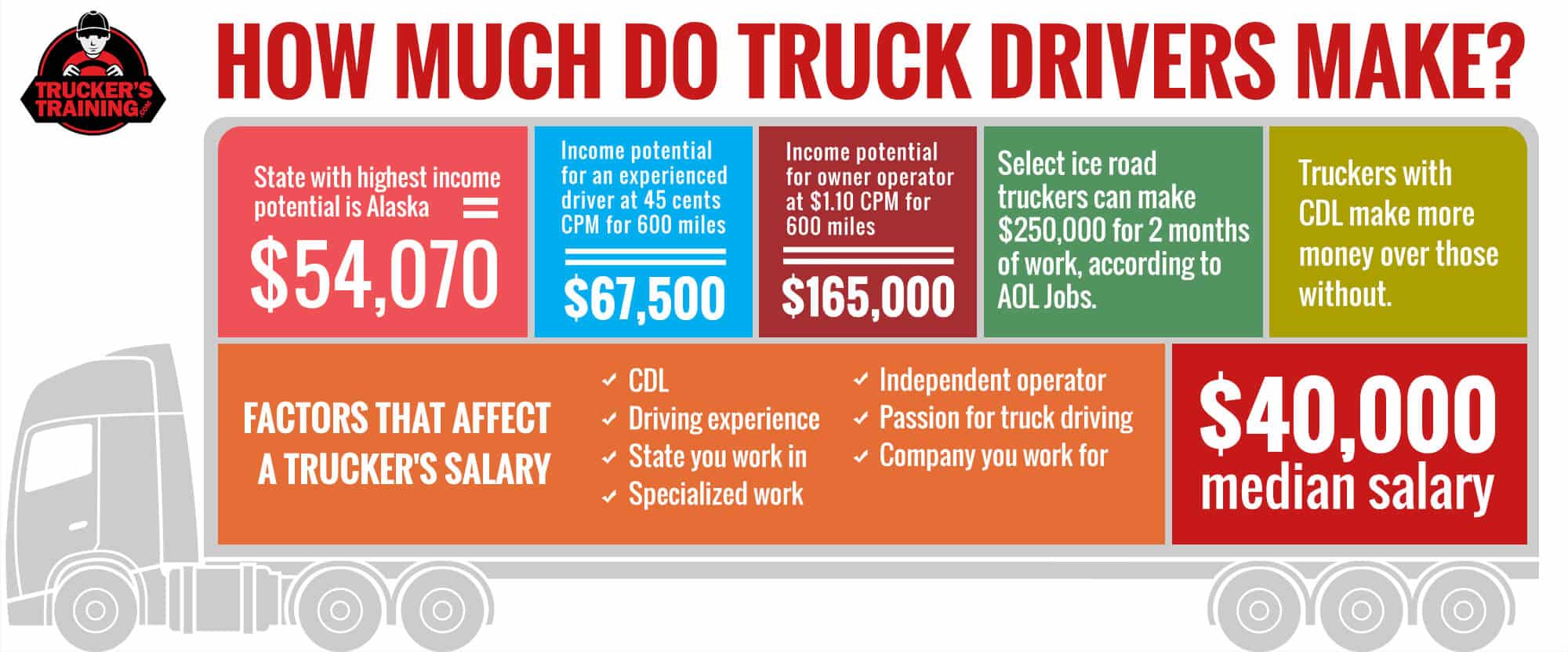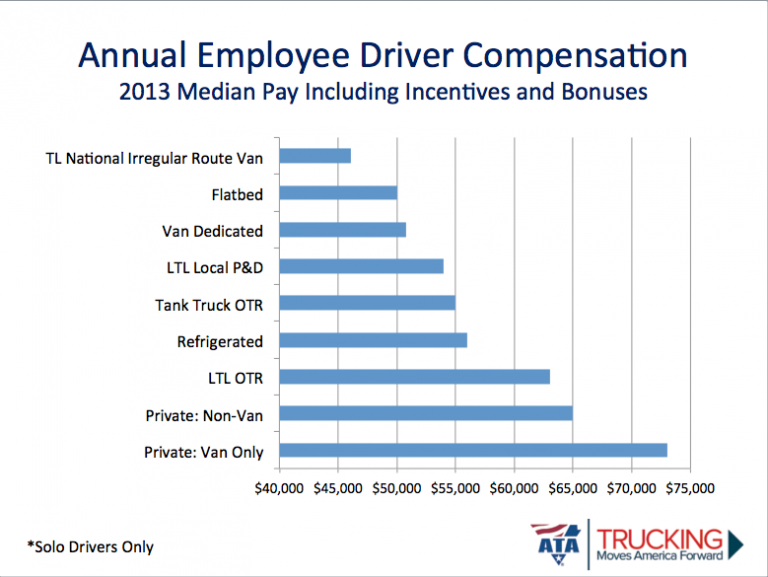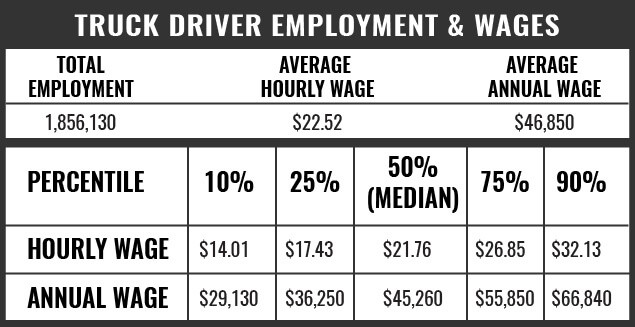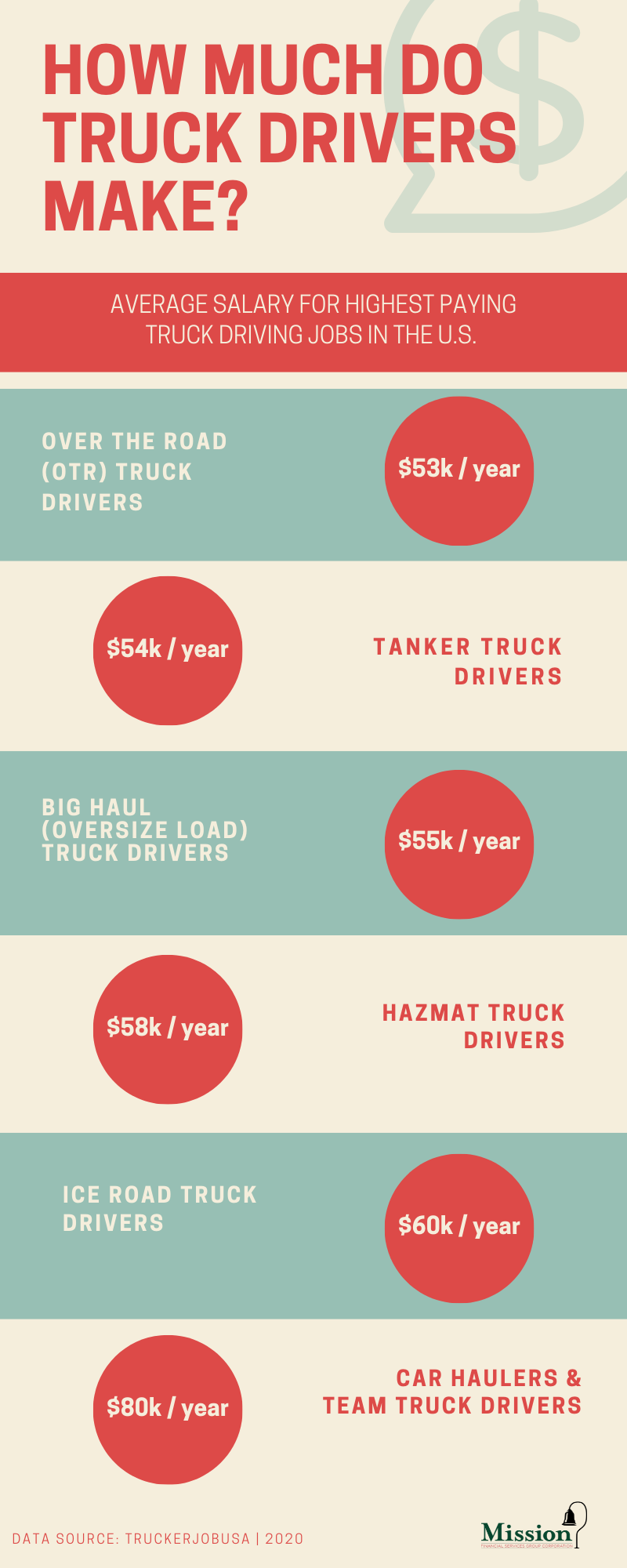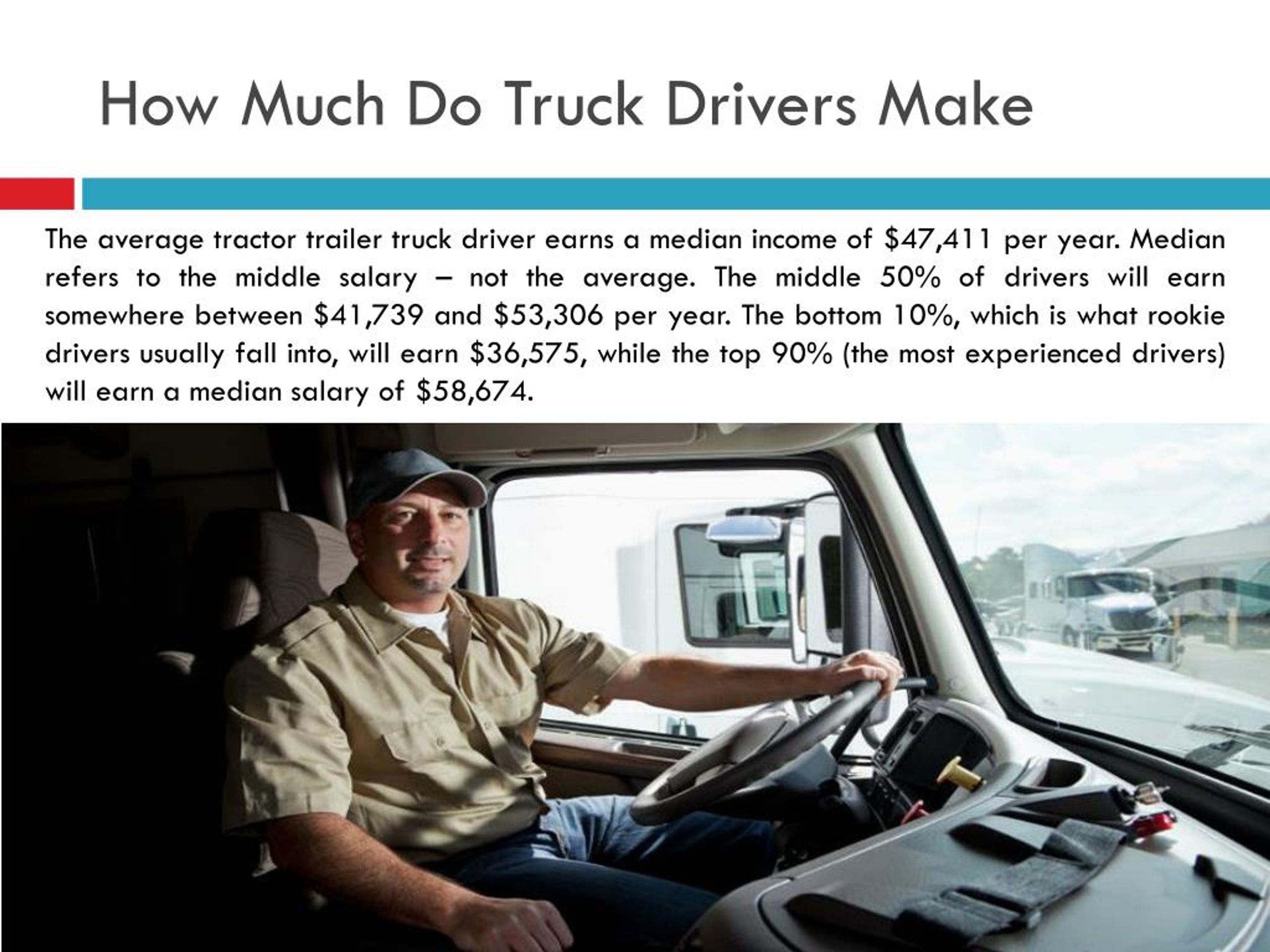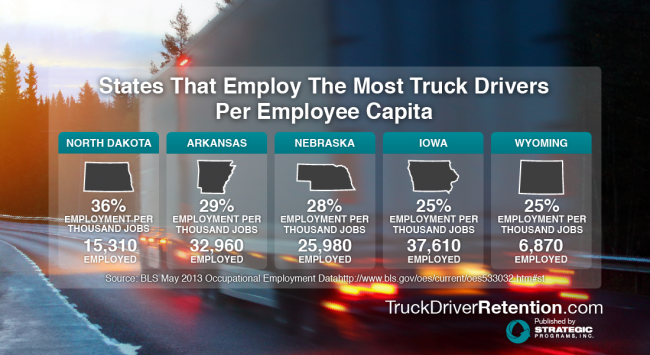How Much Does A Truck Driver Make Yearly
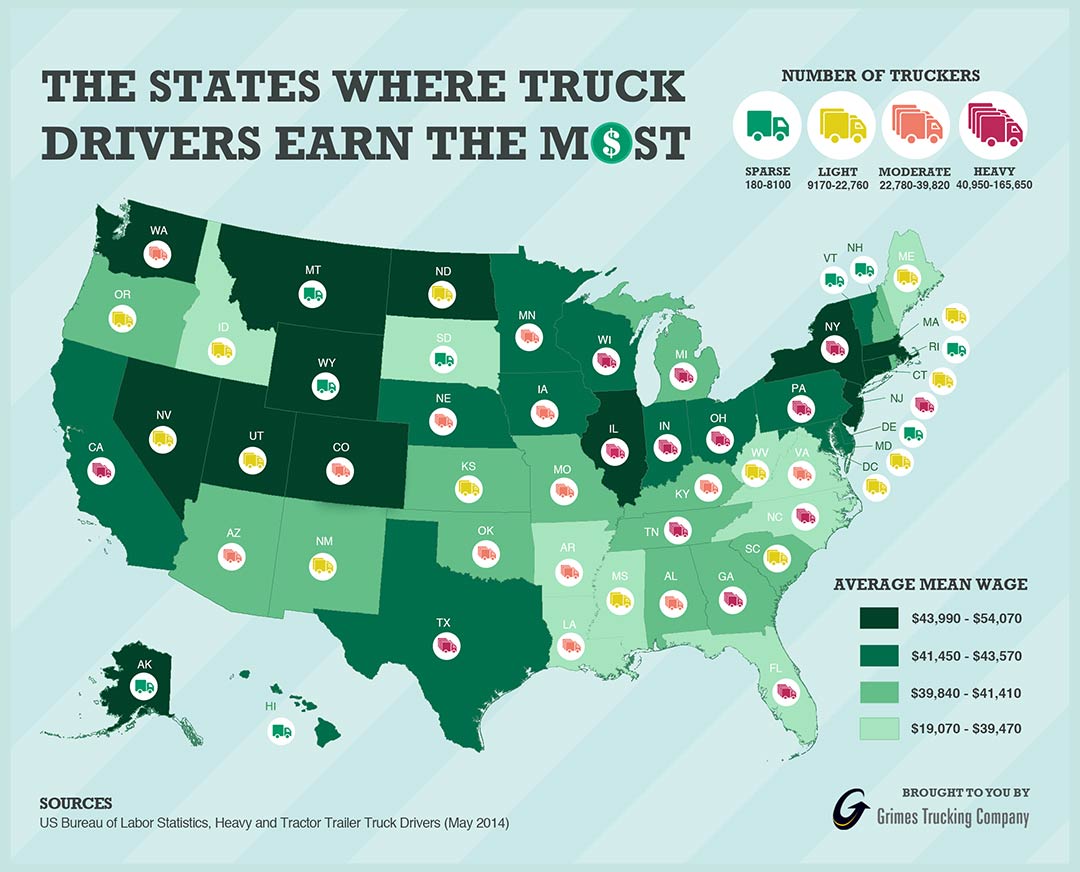
The open road beckons with the promise of independence and the vital role of keeping America's supply chain moving. But behind the wheel of a semi-truck, drivers face long hours, demanding schedules, and the constant pressure of deadlines. A crucial question for anyone considering this career path is: what is the earning potential for a truck driver in today's economy?
This article delves into the complex landscape of truck driver salaries, analyzing data from reputable sources to provide a comprehensive overview of the factors influencing income, regional variations, experience levels, and the ongoing debate surrounding fair compensation for this essential workforce. We will explore the realities of a truck driver's pay, equipping readers with the knowledge to understand the financial implications of this demanding profession.
National Averages and Key Influencing Factors
Determining an exact yearly salary for a truck driver is challenging due to various influencing factors. According to the Bureau of Labor Statistics (BLS), the median annual wage for heavy and tractor-trailer truck drivers was $56,280 in May 2022. However, this number represents a central point and doesn't capture the full spectrum of earning potential.
Several key elements impact a driver's salary. These include experience, type of cargo hauled, driving route (local, regional, or over-the-road - OTR), and the specific company or carrier employing the driver. A seasoned OTR driver hauling hazardous materials will likely command a higher salary than a rookie driver handling local deliveries.
Experience and Tenure
Like most professions, experience plays a significant role in determining a truck driver's pay. Entry-level drivers often start at lower pay rates, gradually increasing their earnings as they accumulate experience and a proven safety record. Many companies offer pay increases based on mileage driven or years of service.
Experienced drivers with specialized endorsements, such as those for hazardous materials (HAZMAT) or oversized loads, are often in high demand and can negotiate higher salaries. Longevity with a reputable company can also lead to increased benefits and higher pay scales.
Type of Haul and Route
The type of cargo a truck driver hauls directly influences their earning potential. Transporting specialized goods, such as hazardous materials or refrigerated products, often commands higher pay rates due to the increased risk and specialized training required. Similarly, drivers willing to undertake long-haul, over-the-road (OTR) routes typically earn more than those who focus on local or regional deliveries.
OTR driving often involves spending extended periods away from home, which many drivers find challenging. The increased compensation reflects the sacrifices associated with this lifestyle. Local drivers, while potentially earning less, benefit from predictable schedules and the ability to return home each night.
Regional Variations in Salary
Geographical location also plays a crucial role in determining a truck driver's salary. Areas with a higher cost of living or increased demand for freight transportation tend to offer higher wages. For example, drivers in states with booming economies or major port cities may earn more than those in less populated regions.
The availability of drivers in a particular region can also impact salary levels. If there is a shortage of qualified drivers in a specific area, companies may be willing to offer higher wages and benefits to attract and retain talent. PayScale and Indeed offer regional salary breakdowns, showcasing variations across states.
The Driver Shortage and its Impact on Wages
The trucking industry has been grappling with a persistent driver shortage for years. This shortage is driven by several factors, including an aging workforce, demanding work conditions, and regulatory hurdles. The American Trucking Associations (ATA) has repeatedly highlighted the severity of the shortage, predicting further strain on the supply chain.
The driver shortage has put upward pressure on wages, as companies compete to attract and retain qualified drivers. Many carriers are offering sign-on bonuses, increased pay rates, and improved benefits packages to entice drivers to join their fleets.
"The truck driver shortage remains a significant challenge for the industry,"noted ATA Chief Economist Bob Costello in a recent statement.
The Future of Truck Driver Salaries
The future of truck driver salaries remains uncertain, with several factors poised to influence earning potential in the coming years. The increasing adoption of autonomous trucking technology could potentially disrupt the industry and impact driver demand, although widespread implementation is still years away. Increased regulatory scrutiny and safety mandates could also affect driver availability and wages.
Despite these uncertainties, the demand for truck drivers is expected to remain strong in the foreseeable future, driven by the continued growth of e-commerce and the need to transport goods across the country. This sustained demand suggests that wages will likely remain competitive, particularly for experienced drivers with specialized skills. Ultimately, the decision to pursue a career in trucking requires careful consideration of the potential financial rewards, the demanding lifestyle, and the evolving landscape of the industry.
